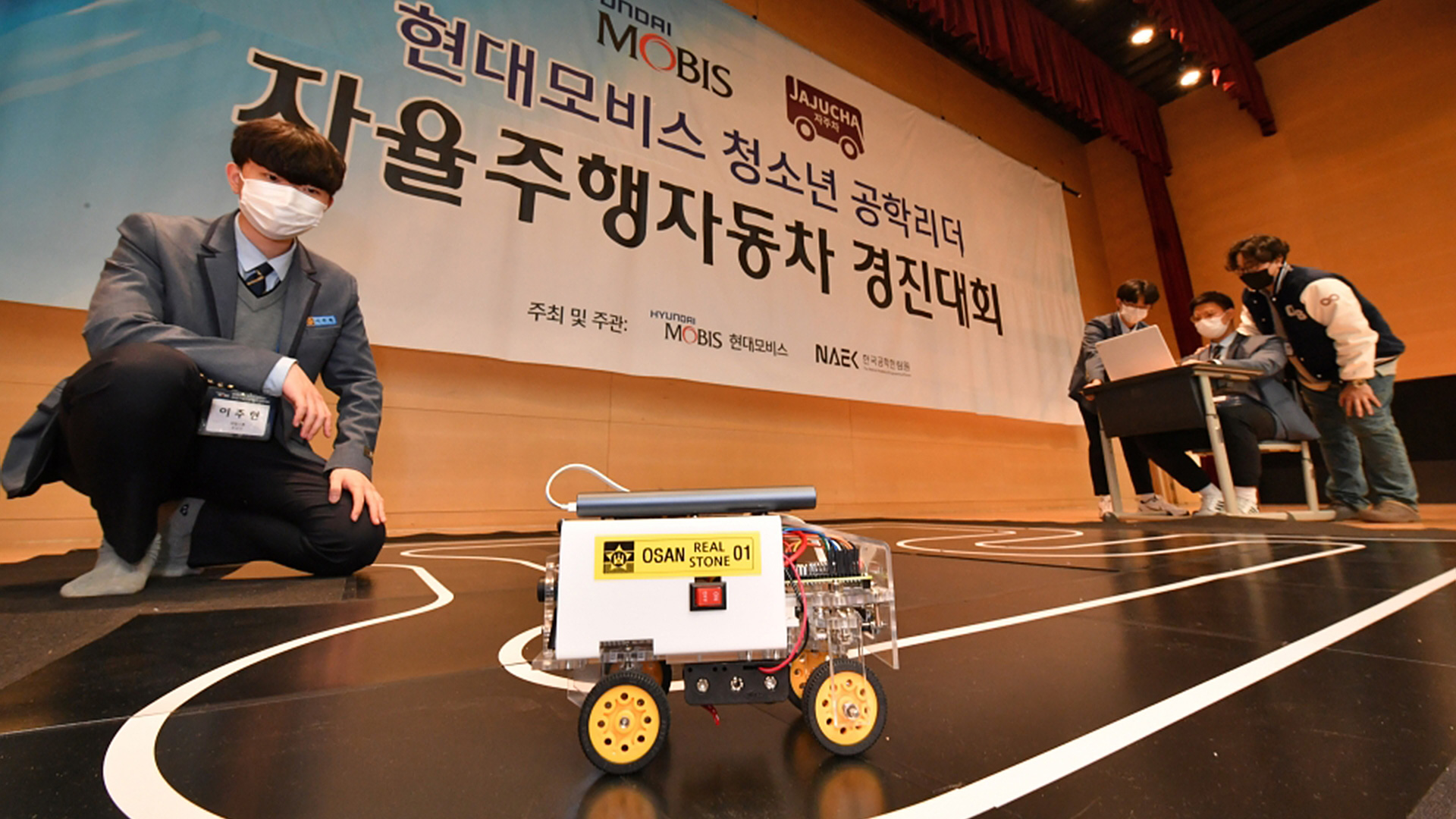
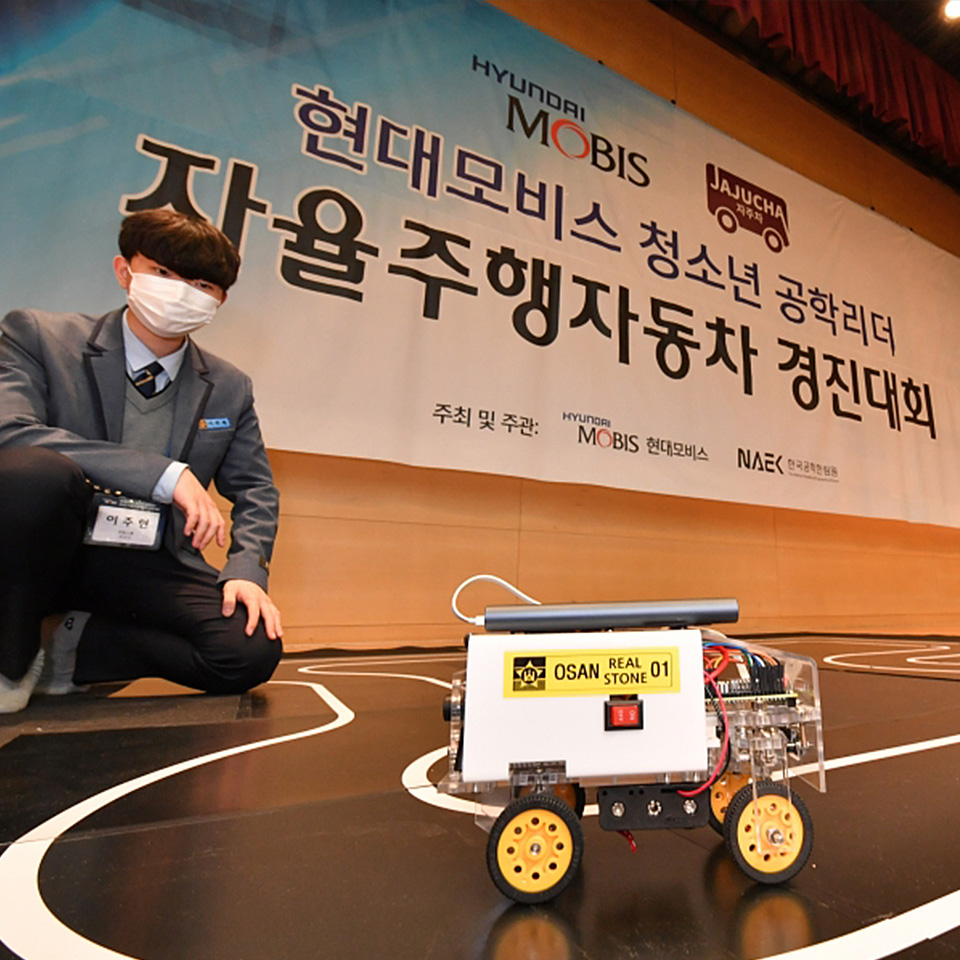


In March, at Seoul Hana High School, Hyundai Mobis’ model CSR activity, ‘Youth Engineering Leader Autonomous Car Contest’ took place. It’s the third time this contest has been held after it started in 2019; it’s one of the ‘Hyundai Mobis Youth Engineering Leader’ programs. The Hyundai Mobis Youth Engineering Leader programs are a corporate social responsibility program they carry out with National Academy Engineering of Korea and Incheon National University. Volunteer work, education, and research activities are carried out for a year so that high-school students can grow up to be the leading software talent in the future car era. Let’s find out what this particular Youth Engineering Leader Autonomous Car Contest was and how it was conducted.
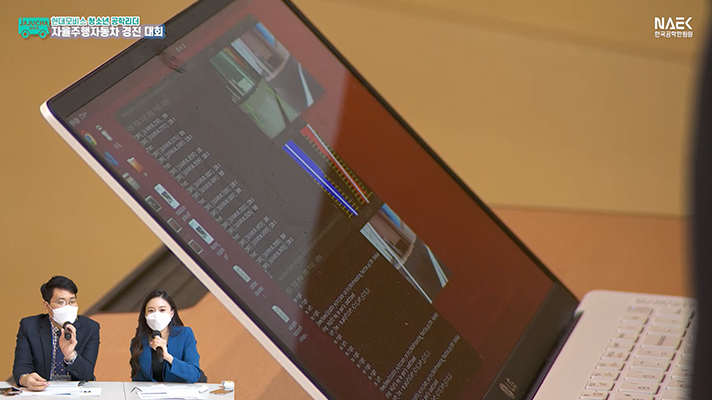
10 high school teams that underwent the preliminaries around the country participate in the ‘Youth Engineering Leader Autonomous Car Contest.’ Students create their own autonomous driving model cars and program the software algorithm. They develop the software algorithm so that the autonomous cars they produced recognize lanes, obstacles, and move according to signals. The contest randomly installs traffic signs and crosswalks on the track to evaluate how many times the cars go off lane, make errors, and how long it takes for them to complete the driving, etc., to rank the cars. Through the contest, students get to make use of math and science related knowledge they learned at school to resolve issues.
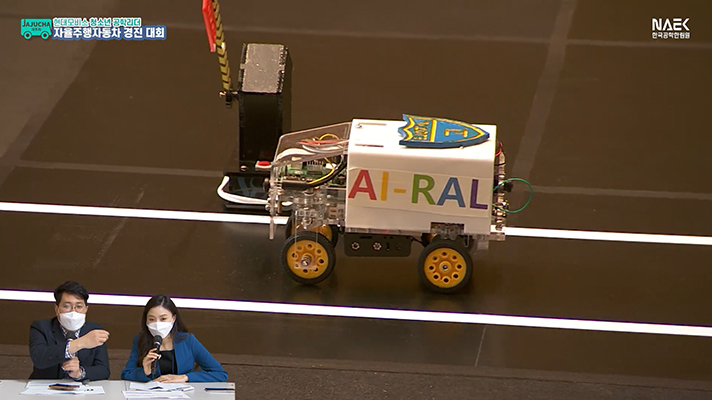
Students don’t really make actual autonomous cars. They make use of the AI autonomous driving car program developed by Professor Kim Pyeong-won and his team at Incheon National University. The AI autonomous driving car program provides the model car, track, and basic platform; it’s designed so that the students go through coding learning to develop an actual AI autonomous driving model car. The autonomous driving car software algorithm development requires students to discuss how they will organize the algorithm, create basic algorithm, and adjust errors, ratio, and specifications to complete their algorithm. Hyundai Mobis provides the autonomous driving car coding online training required for the algorithm production. Students and teachers learn coding through the lectures and produce their autonomous driving car for the contest.
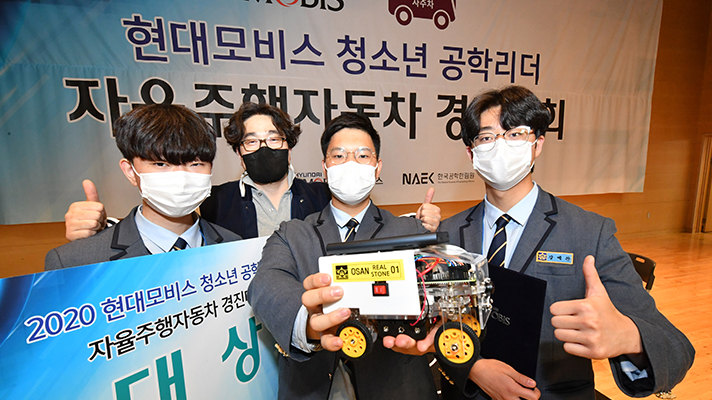
Which team took the Grand Prize for this contest, where one could enhance their level of understanding on autonomous car algorithm and acquire expert knowledge? It was Osan High School’s ‘Real Stone’ Team (Jo Hyun-min, Kang Ye-chan, and Lee Joo-hyun). The students said that they were much interested in autonomous cars and therefore participated in related group activities, building up knowledge on autonomous cars. With a help from their guidance teacher An Jin-seok, they watched related videos and lectures to prepare this contest. They prepared the contest during their winter break, and when school began in March, they drove with the algorithm that they created until 9 in the evening every day to correct and complement their algorithm. Among the great participating teams, what was the reason behind Real Stone’s Grand Prize? We asked the team leader, Osan High School senior Jo Hyun-min.
“We didn’t use the basic algorithm provided by the contest headquarters but instead created a new algorithm. We chose to drive safer even if it was a bit rough. Thanks to countless correction and complementing, we were able to complete our drive without going over the lane once. Great teamwork also contributed to our winning the Grand Prize. We communicated actively even when we couldn’t meet in person all the time through simulation; we were able to smartly react to variables during the contest because all our team members were talented in many areas. Wi-fi was disconnected for a while and the steering gear went out of neutral status, but the team members reacted quickly and took care of all that.”
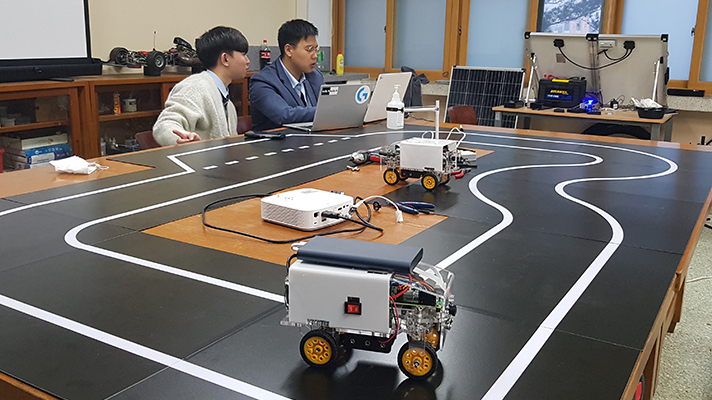
COVID-19 limited face-to-face meetings, but the students completed their algorithm without much difficulty through the autonomous car simulation provided by Hyundai Mobis and National Academy Engineering of Korea and also carrying out virtual drives at home. What did they feel and what kind of experience did they have through the participation and winning of this contest? Lee Joo-hyun from Real Stone said that this was an opportunity to realize imagination into real life.
“This contest was meaningful because I was able to research the autonomous driving technology that I only had imagined in my head specifically and realize it. I challenged myself to push limits during algorithm development process and experienced the technical direction and legal limits of autonomous cars, which will take up the greatest portion of future industries. For autonomous cars to be commercialized in the future, there will have to be related laws and stabilized technologies. I plan to independently continue studying related areas on autonomous driving related law and technology stabilization.”
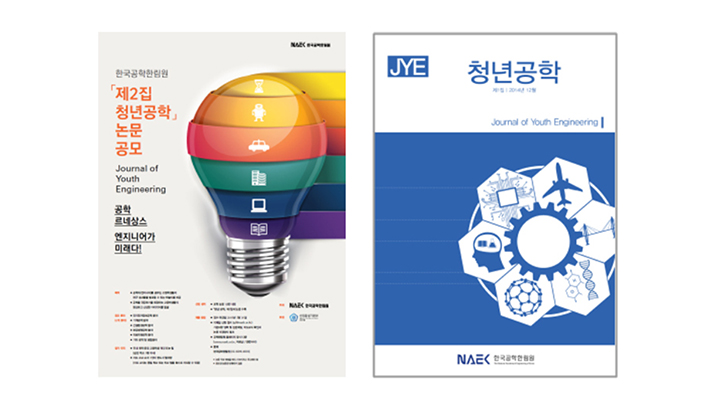
The students participating in the Hyundai Mobis Youth Engineering Leader Autonomous Car Contest are given the benefit of publishing their papers on the autonomous driving technology on the academic paper published by National Academy Engineering of Korea, ‘Youth Engineering.’ Each team is allocated a guidance teacher and an advising professor to prepare their papers, which are consisted of explanation on the algorithm developed by the students themselves. The previously published papers can be searched on the Hyundai Mobis Youth Engineering Leader program homepage.
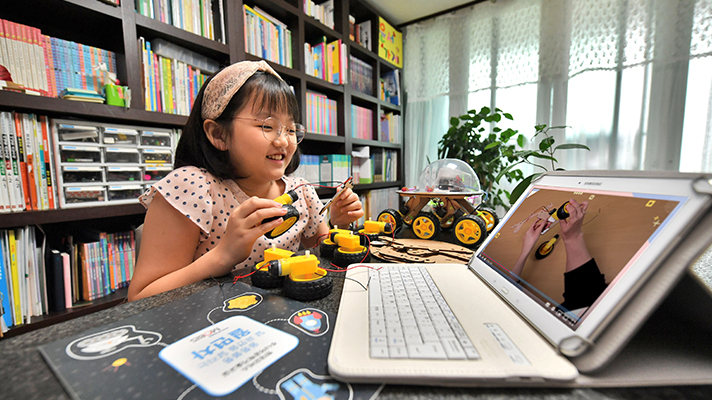
The Youth Engineering Leader Autonomous Car Contest is over, but Hyundai Mobis’ Youth Engineering Leader program continues. The youth engineering leaders who participated in the contest are scheduled to participate as a one-day teacher in the Junior Engineering Class. Junior Engineering Class is a hands-on science class for elementary students where Hyundai Mobis employees and youth engineering leader students participate as a one-day teacher to teach them about science principles. Hyundai Mobis produces and uploads lecture videos on the science principle explanations and making training aids; students then watch these lectures and make things themselves. From the ‘Junior Engineering Class’ for elementary school students to the ‘Youth Engineering Leader’ that allow high-school students to dream of becoming an engineer, Hyundai Mobis continues to operate programs for the development of future mobility talents. Hyundai Mobis will continue to make this investment so that more students will take interest in science and engineering.